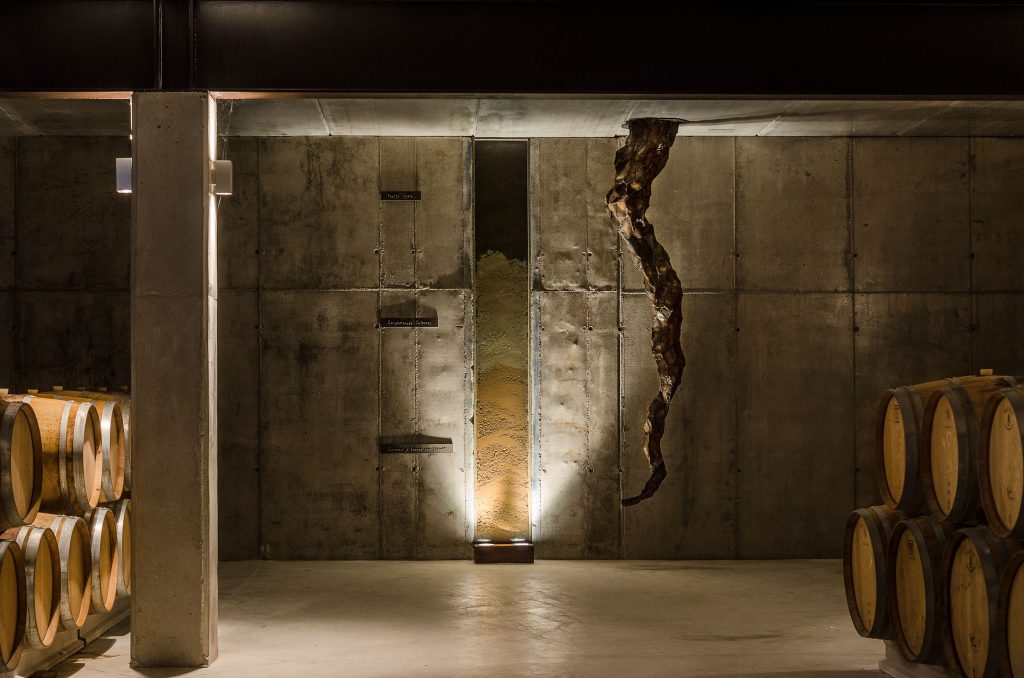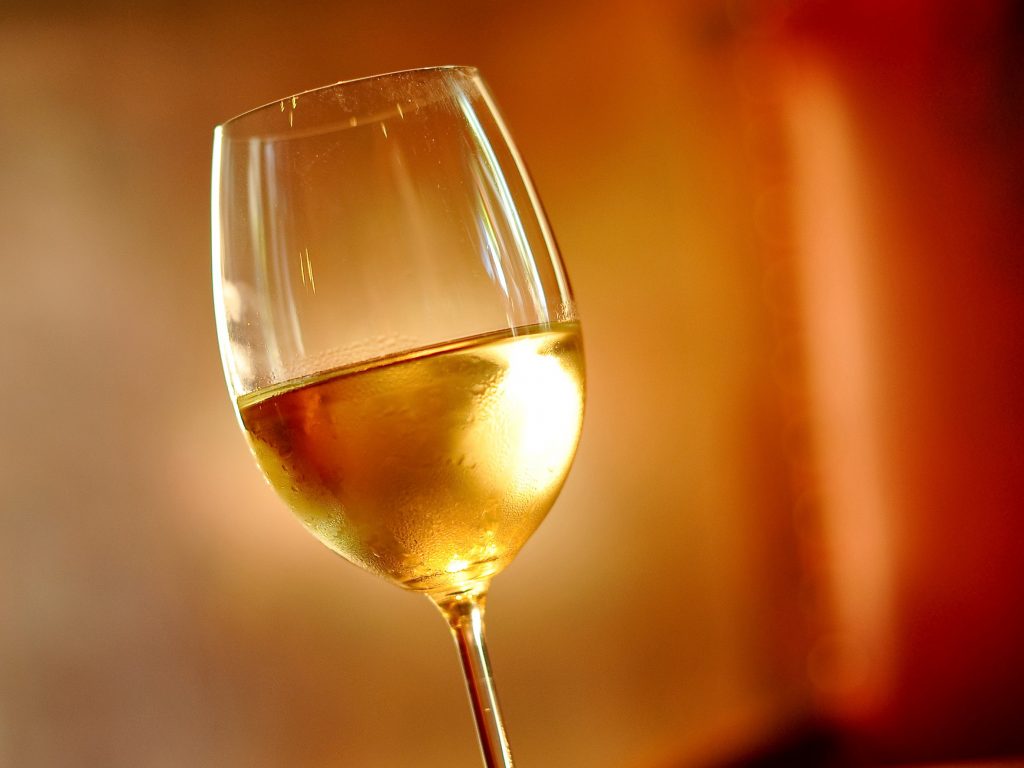On the Grounds of Spain’s Bodega Numanthia Vineyard
Hot, dry land yields a bold but complex wine

by Alia Akkam
Towering over the vineyards of Bodega Numanthia, a seemingly out-of-place steel sculpture painted copper rises from the collage of petite plots in Spain’s hot, parched Toro wine region. Resembling a jungle gym, a modern, geometric one too artful for a playground’s misadventures, the art piece appears as a mirage, glistening amid a raw backdrop of green, blue and brown hues. Climbing is verboten, but this apparatus, crafted by Paris-based 5.5 design studio, is certainly meant to engage. Partner Vincent Baranger, the firm’s head of brand design, says that the piece, named Poza de Tinta—that’s Spanish for inkwell—was built in tribute to the vineyard’s wide, open grounds, seamlessly merging into the environment.
5.5, which lends its creativity to a spectrum of projects—whether packaging for Champagne Duval-Leroy, tools for pastry chef Christophe Michalak or overseeing the art direction of the 20th century-inspired Les Puces du Design fair—also weaves land design into its repertoire. For instance, they have depicted picnicking rituals through red-and-white checkered mosaic tablecloths in one French park, and planted perspective-shifting pieces of furniture into the grounds of another.

Two hours northwest of Madrid, Toro, in the province of Castilla y León, is arid and remote. Unlike the immaculate rows of vines found elsewhere in Europe, the ones here take the forms of stubby plants crouched low to the flat ground and spread far apart so that their roots are free to thrive and plunge deep in the soil, a must for triumphing over extreme climate conditions that instantly turn menacingly frosty. All of them yield just one single native grape variety: the black Tinta de Toro, more widely known in the States as Tempranillo.
While much of Spain’s storied wine culture is synonymous with Rioja, in recent years other locales have found their way into the spotlight, such as Penedés in Catalonia for an array of zippy Cava, Rías Baixas in Galicia for that easy-to-drink tapas companion Albariño and now, propelled by Bodega Numanthia’s brooding wines, Toro.

First launched in 1998 by the prominent Eguren wine family, Bodega Numanthia was swooped up a decade later by French luxury goods behemoth LVMH, where the signature berry- and cedar-laden Numanthia and heady, twice-aged Termanthia share space alongside Krug Champagne and Glenmorangie Single Malt Scotch in Moët Hennessy’s booze portfolio.
These are bold, elegant wines, spawned from century-old vines. So hardy are they, they even survived Phylloxera, the insect epidemic that ravaged European vineyards in the 1860s and 1870s. Grafting French vines onto American rootstocks was the sole antidote to this devastating blight, the only way to resuscitate European wine production. Yet Bodega Numanthia wasn’t forced to take this route because it was among the few rare vineyards that didn’t succumb, its well-preserved parcels translating to 40 percent of vine stocks that are over 70 years old. “In our eyes, Bodega Numanthia is truly a rough diamond, requiring expert hands to cultivate and shape its clarity and color,” explains Baranger. “The installation is an evocation of this metaphor, a multi-faceted diamond, which seems to be coming out of the ground.”
When Baranger and his team visited Bodega Numanthia for the first time, he says he was “moved by the strength of this timeless landscape, and by the resilience of these vines.” Nature, adds Baranger, is the essence of land design, “and the discipline draws on its properties to provide functionality. Here, we have sought out the coolness found several meters down into the earth.”

Doing so re-imagines a practice embraced by local peasants of yesteryear, Baranger says, when—because of transportation challenges—each family with a plot of vines was forced to stay on site during harvest. A “tuda,” an underground room personally dug out by the families, came to the rescue, acting as pleasant, temporary living quarters.
Tucked into this burrow below Poza de Tinta is a trio of fine vintages, stored until they are ready to be tasted in the great outdoors. Then, the bottles are dramatically lifted up via a pulley and a new drinking ritual unfolds—one that is “focused on sharing, gathering people, wine and nature,” says Baranger. “We celebrate the soil that gives us this treasure.”
Images courtesy of Bodega Numanthia












